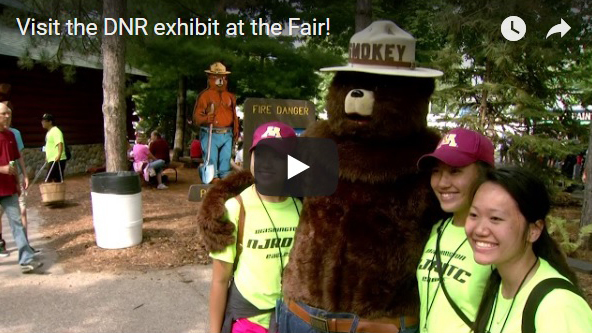 During the DNR's biggest outreach event of the year, about 350 DNR staff are representing their divisions, working shifts at the Minnesota State Fair.
The DNR exhibit at the corner of Carnes Avenue and Nelson Street attracts about 500,000 visitors -- or one out of every four fairgoers -- annually. To help make it all happen, about 480 nonemployee volunteers also work during the 12 days of the fair.
This year's theme, "Public Lands -- Owned by You, Managed by DNR," draws attention to the value of public lands for recreation, conservation and economic benefits. Special events each day help to connect fairgoers to the outdoors and bring attention to the DNR's work and the natural resources that make the state unique.
Find a calendar of about 40 events and stage presentations at mndnr.gov/statefair.
The DNR exhibit is open 9 a.m. -9 p.m. daily through Sept. 2.
Upcoming webinar on chronic wasting disease
 Save the date and join us for the next conservation science chat webinar about chronic wasting disease at 1:30 p.m. Wednesday, Sept. 18.
Chronic wasting disease is a neurological disease of deer, elk, and moose that was first discovered in a Minnesota captive elk in 2002. Managing for a disease-free wild deer population presents difficult biological and sociological challenges. Neither the deer or people who enjoy them are the same across the state; thus, a comprehensive strategy that includes biological knowledge, human dimensions, and policy/legislative changes are critical to success. Lou Cornicelli, DNR wildlife research manager, will present.
Visit the conservation science chats intranet page the day of the event to access the webinar. If you need an accommodation for a science chat webinar, contact Charlotte Riggs, 651-259-5306.
DNR employee profile: John Peterson
A call to serve
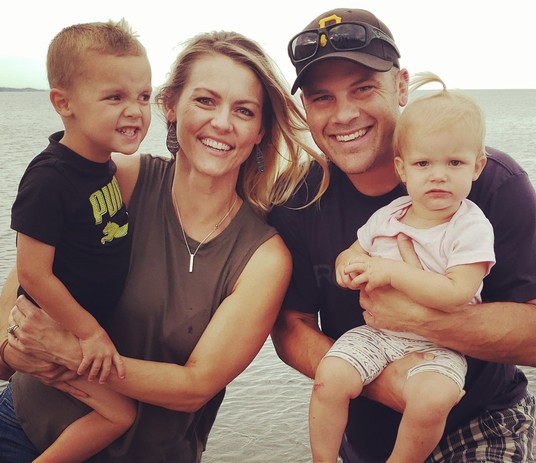 Some state employees consider their jobs a call to public service. John Peterson, the DNR’s emergency management coordinator, takes his call to serve to another level.
Peterson was a college student studying physics and math in 2003 when he abruptly dropped out to enlist in the Army. He knew what he was getting into. U.S. forces had just invaded Iraq.
“I was seeing news reports of soldiers not coming home to their families and I looked at my life and thought, why not me?”
During that 22-month tour, Peterson was part of a convoy security mission, escorting 20 to 40 fuel tanker trucks at a time from the Iraq/Kuwait border to Baghdad and other military bases. As a machine gunner he sat at the front of the convoy in a Humvee turret on the lookout for IEDs, roadside bombs, snipers and rocket propelled grenades. “You learn how to deal with the fear and try to shut it down,” he said. “You learn how to suppress your emotions.”
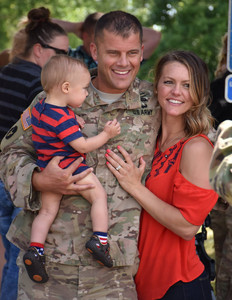
In a big way, the military instilled in him not only resilience and courage but an aptitude for remaining calm under fire, whether it be from a sniper in the Middle East or a flood in southeastern Minnesota. In his DNR job, problem solving and decision making in the face of high stress situations is critical.
Two more times after Iraq, he was deployed to military hot spots, including as a platoon leader in Kuwait and a 12-month peace keeping mission in 2016 to Egypt, where ISIS was fully engaged in attacks on the population. This time Peterson was deployed 10 days after his first son was born. After a year leave of absence to accommodate his time in Egypt, coming back to his DNR job made his deployment somewhat unreal. “It’s like you were dreaming, and then you wake up and you’re back in life again.” Afterward, he was hard-pressed to find the same adrenaline rush that comes from the intense and dangerous profession of an infantryman.
Back at the DNR, he took up where he left off, managing and developing emergency plans and programs, including preparedness, response and recovery efforts for disasters such as floods or fires, a potential active shooter or a radiological breach at one of the state’s nuclear power plants.
In an earlier instance, he coordinated the agency’s response to avian influenza that destroyed poultry flocks several years ago, in conjunction with the state emergency operations center. In the spring, executing his response plans to floods and dealing with structural damage to DNR buildings and infrastructure is reoccurring.
A 16-year member of the Minnesota Army National Guard, he’s now training Army officer candidates as an instructor at the Regional Training Institute at Camp Ripley, and as long as he keeps that position he wouldn't be deployed overseas again. Peterson is married now and raising two small children.
Through the years, the military has continued to help him grow in his career and personal life. “I’ve learned a lot about leadership. You learn a lot about yourself and I’ve made a lot of lifelong friends. The camaraderie is probably what keeps me enjoying the Guard and the military.”
At the DNR he is a member of the DNR’s Beyond the Yellow Ribbon Committee, supporting military service members, veterans and their families.
-- Julie Forster, information officer, Office of Communication
|

Bio Box: John Peterson
Job Title: emergency management coordinator
DNR location: Central Office
At the DNR since: 2013
Education: Enrolled at Thomas Edison State University, New Jersey, working toward a bachelor’s degree in emergency management.
Interests: Spending time outdoors with wife and kids, 1 and 3. Golf.
Something his colleagues don’t know about him: He plans to get his pilot’s license. Considering a career in IT, like his dad and brother, perhaps in IT security or database design.
|
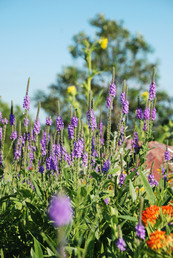
Check out the Prairie Pod podcast!
Interested in prairies and grasslands, and the wildlife that live there? The DNR launched its Prairie Pod podcast – and season two is underway!
Dakota skippers, fire, restoration/reconstruction, skinks, snakes, interseeding, management and seed mix design are just some of the things you can learn about.
Subscribe on iTunes, Google Play, or any podcast-streaming app or download from our Prairie Pod page at mndnr.gov/prairiepod.
DNR regional ecologist Megan Benage and research scientist Jessica Petersen are the voices on the podcast. They share a passion for prairie and natural lands.
|
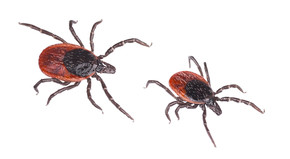
It’s not too late to prevent tick bites
Before we know it, winter will arrive and the colder temperatures will freeze ticks or send them underground.
Unfortunately, and fortunately, winter isn’t here yet – meaning tick bites continue to be a risk for Department of Natural Resources employees.
From FY18 to FY19, there was a 12 percent reduction in reported tick bites. But, since tick bites are preventable, we want to see a 100 percent reduction. Consider the following to reduce the risk of a tick bite:
-
Keep ticks on the outside. The two most reported areas for tick bites were the torso and legs, but ticks can’t crawl through clothing. Tuck in your shirt and make sure pants are sealed, preferably with gaiters. For high exposure areas, wear long-sleeved shirts with the cuffs sealed. Rubber boots and slippery surfaces can make it easier to brush ticks off while walking through brushy areas.
-
Use Permethrin. Permethrin is an effective insecticide. The more a tick crawls on treated clothing, the greater the chance it will die or fall off before you are bitten. Wear a fully treated outfit and take advantage of the DNR paid offerings of permethrin clothing.
-
Inspect for bites. Most tick-borne illnesses need the tick to be attached for more than 24 hours in order to spread the disease to a host. Getting the tick off quickly is key to not getting sick. Provide and encourage the use of tick check stations. As soon as you can after being in the field, take a hot shower and do a tick check. Throw your clothes in the dryer for 10 to 15 minutes on high heat to kill remaining ticks.
-
Use all forms of protection. The DNR policy requires at least two forms of tick protection. Wearing light-colored clothing is the least effective method, with a sealed, Permethrin-treated outfit being the most effective. The best protection is to make sure a tick is never on you in the first place.
For more information, check out the Tick Awareness page of the Intranet.
|
General services, construction contracts moving to EIOR
Starting Oct. 1, all general services and construction contract purchasing requests will be added to the Electronic Inter Office Requisition System (EIOR).
- General service is laborer work performed for the DNR on or off state land – for example, lawn mowing, janitorial, garbage services, hand tree planting, and public water access or trail maintenance agreements.
- Construction contracts are used for new construction, or alterations and additions to existing buildings, roads, bridges, trails, water control structures, dams, and other infrastructure projects.
The changes to EIOR will allow employees to request general service and construction contract purchases through a single access point and eliminate multiple forms and confusion by generating questions based on selections.
The advantage to have general services and construction contracts added to EIOR are:
- Eliminates the current process of emails being sent to individual staff members to initiate the bidding process by regional business offices
- The ability to move purchasing work across regional boundaries to better expedite processing times
- Help create more consistency statewide regarding how procurement work is processed
- Single access point for requestors regardless of the purchasing path a request follows
- Time efficiency with drop-down menus and prompts to collect all essential information upfront
Moving all general services and construction contracts purchasing requests to EIOR will allow the process to be faster, more transparent, easily documented and streamlined.
Within the next 12 to 18 months, the following will also be moved to EIOR:
- Professional/technical contract requests
- Special expense requests
- Out-of-state travel requests
- Op Order 101 partnership proposals
- Op Order 118 event proposals
To be more accessible, buttons on the home screen in EIOR have been moved to the navigation bar. Updated quick reference guides (QRGs) will be created and put on the intranet with step-by-step instructions.
For questions, contact Purchasing Operations Supervisor Sally Dybdal at sally.dybdal@state.mn.us or 651-259-5449, or your regional business manager.
Thank you from Minnesotans
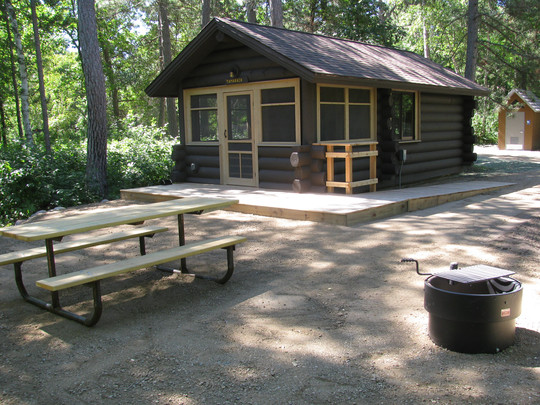 Camper cabin at Lake Bemidji State Park.
Editor's Note: A camper who stayed recently at Lake Bemidji State Park sent this thank you letter to park manager Pete Harrison and park staff:
This past weekend our family stayed in all four of your camping cabins plus one camping trailer site. We have camped in different campgrounds every year looking for a favorite one. This year, after 20 years of looking, we found our favorite. Lake Bemidji State Park was a hit with all of us! Thank you! The Keranen family, Dassel, Cokato.
Another thank you
NOTE: The family of Terry Lee Woeltge, who fell into Lake Pepin and drowned July 25, sent the following thank you note to Enforcement:
Terry was a source of warmth and generosity for all who were fortunate enough to have known him. We are so devastated to have lost him and to endure this tragedy, but we have found so much comfort in the support we received from the Lake City community and your team.
Your diligence and persistence to help bring him home was remarkable and without it, the service this past weekend would have felt a little more empty without the opportunity to say goodbye one last time. The greatest gift of all was the level of respect and empathy from you all during those 42 hours spent crisscrossing Lake Pepin, ultimately bringing him home. We are forever grateful. Thank you again, from the depths of our hearts, for all you did for us.
|